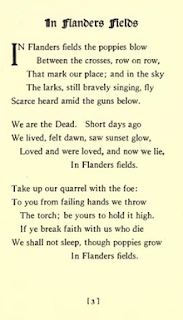No terceiro dia de pânico no Rio, operação policial mata um e prende 11
Por Redação Yahoo! Brasil*De acordo com a Polícia Militar, um homem morreu em confronto com a polícia e 11 suspeitos foram detidos nas operações policiais que já atingem 18 favelas no Rio e da Baixada Fluminense nesta terça-feira, 23. O suposto traficante foi morto na Favela da Mandela, na zona norte do Rio. Com ele, os agentes apreenderam uma pistola 45.
Foram apreendidas em várias incursões duas granadas e munições para diversos calibres. A polícia também anunciou a apreensão de 50 quilos de maconha e dois mil papelotes de cocaína até o início da tarde desta terça.
O tiroteio entre policiais e traficantes das favelas Merendiba e Vila Cruzeiro durou meia hora e assustou os moradores da Penha, na zona norte. Dois homens foram presos, entre eles um apontado como gerente do tráfico na Merendiba. Um fuzil 762 e drogas também foram apreendidos. Ninguém ficou ferido.
As operações ocorrem nas comunidades Mandela 1, 2 e 3, Varginha, Nova Holanda, Arará, Parque União, Jacarezinho, Cutia, Fallet e Fogueteiro, Encontro, Tuiuti, Barreira do Vasco, Vila Joaniza, Barbante e Vila Cruzeiro.
Na operação desta terça, o Comandante Geral, Coronel Mario Sérgio de Brito Duarte, ainda determinou a Operação Fecha Quartel. Ela conta com cerca de 1.200 policiais militares deslocados do serviço burocrático para o policiamento ostensivo, a fim de aumentar a presença policial nas ruas.
Outra medida adotada foi a criação do Centro de Inteligência montado no 22ºBPM (Maré) para monitoramento de todas as ações, sob a Coordenação da Secretaria de Segurança. E a partir de hoje, mais de 300 novas motos reforçam o patrulhamento da região metropolitana.
CHECK THE VIDEO: http://br.noticias.yahoo.com/s/23112010/48/manchetes-no-terceiro-dia-panico-no.html
Ajuda federal
O ministro da Justiça, Luiz Paulo Barreto, ofereceu ao governo do Rio de Janeiro o envio de efetivos da Polícia Federal (PF), da Força Nacional de Segurança Pública e da Polícia Rodoviária Federal (PRF) para ajudar o Estado a controlar a onda de assaltos e ataques incendiários a veículos promovida pelo crime organizado. "Somos parceiros do governo do Rio no projeto de pacificação das favelas pela via da segurança preventiva e, num momento como este, temos que estar ainda mais unidos", afirmou.
Policiais rodoviários federais já foram acionados para intensificar o patrulhamento nas rodovias, após um pedido feito pelo governador Sérgio Cabral ao Ministério da Justiça. De acordo com o governo do Rio, Cabral também conversou com o presidente Luiz Inácio Lula da Silva sobre o pedido de reforço.
Em Copacabana, onde acontece a convenção esportiva internacional Soccerex com empresários e dirigentes esportivos do mundo todo, a polícia prendeu durante a madrugada de segunda para terça-feira quatro homens acusados de tentar incendiar veículos em ruas do bairro.
O grupo, que contava com dois menores de idade, foi detido com artefatos incendiários caseiros que seriam colocadas sob veículos estacionados, de acordo com a polícia.
Quatro veículos foram incendiados desde a noite de segunda-feira na zona norte da capital, onde os ataques começaram na tarde de domingo também com carros queimados nas ruas.
"Esses ataques incendiários estão sendo orquestrados por uma facção criminosa", informou a Polícia Civil em nota nesta terça. Segundo a polícia, não houve vítimas ou feridos nos ataques contra veículos.
Represálias a UPPs
Uma cabine da Polícia Militar em Del Castilho, na zona norte da cidade, foi alvejada com cerca de 50 tiros, mas ninguém se feriu.
As autoridades de segurança do Estado consideram os ataques uma represália pela implantação das UPPs, as Unidades de Polícia Pacificadora, em favelas da capital fluminense que antes eram controladas pelo crime organizado.
Segundo fontes da Secretaria de Segurança, os suspeitos querem apavorar a população e causar uma sensação de insegurança na cidade, que será o palco principal da Copa do Mundo de 2014 e a sede dos Jogos Olímpicos de 2016.
Para o sociólogo Ignacio Cano, coordenador de diversos estudos sobre a violência no Rio de Janeiro, os ataques podem ter o objetivo de desestabilizar a segurança, mas não tem o mesmo impacto de ações criminosas do passado.
"Na queima de carros parece que realmente há uma intenção de criar um certo pânico, impactar a população, e pode haver uma intenção dos grupos de desestabilizar a situaçãoo da segurança pública", disse à Reuters o professor da Universidade do Estado do Rio de Janeiro.
"Mas, apesar disso, nós já tivemos episódios muito mais graves, como ataques a ônibus, ataques a delegacias, e ordem para fechar o comércio, no final de 2006", afirmou, acrescentnado que dessa vez um grupo menor pode ser o autor dos ataques.
A implantação das UPPs em 15 das centenas de favelas espalhadas pela cidade é considerado o maior avanço na área de segurança pública do Rio de Janeiro nos últimos anos, e a medida foi inclusive citada pelo Comitê Olímpico Internacional como um exemplo de que a cidade será segura para a Olimpíada de 2016.
A Polícia informou que duas pessoas que estavam em um carro na Baixada Fluminense foram mortas a tiros, mas ainda não se sabe quais foram as causas do crime e se ele está relacionado à onda de ataques.
O mais grave dos ataques foi registrado no domingo, quando seis criminosos bloquearam um trecho da Linha Vermelha, onde assaltaram vários motoristas, queimaram dois veículos, roubaram um terceiro e, na fuga, atacaram a tiros uma caminhonete da Força Aérea que passava pelo local.
Com informações das Agências Estado, EFE e Reuters











![[Image]](http://www.harpers.org/media/image/blogs/misc/moscowarttheatre.jpeg)










